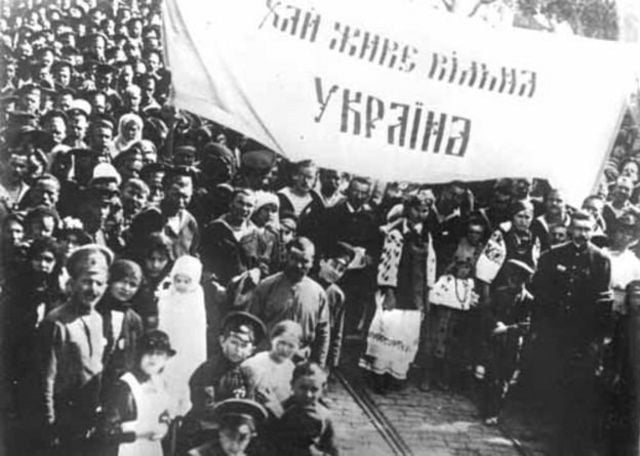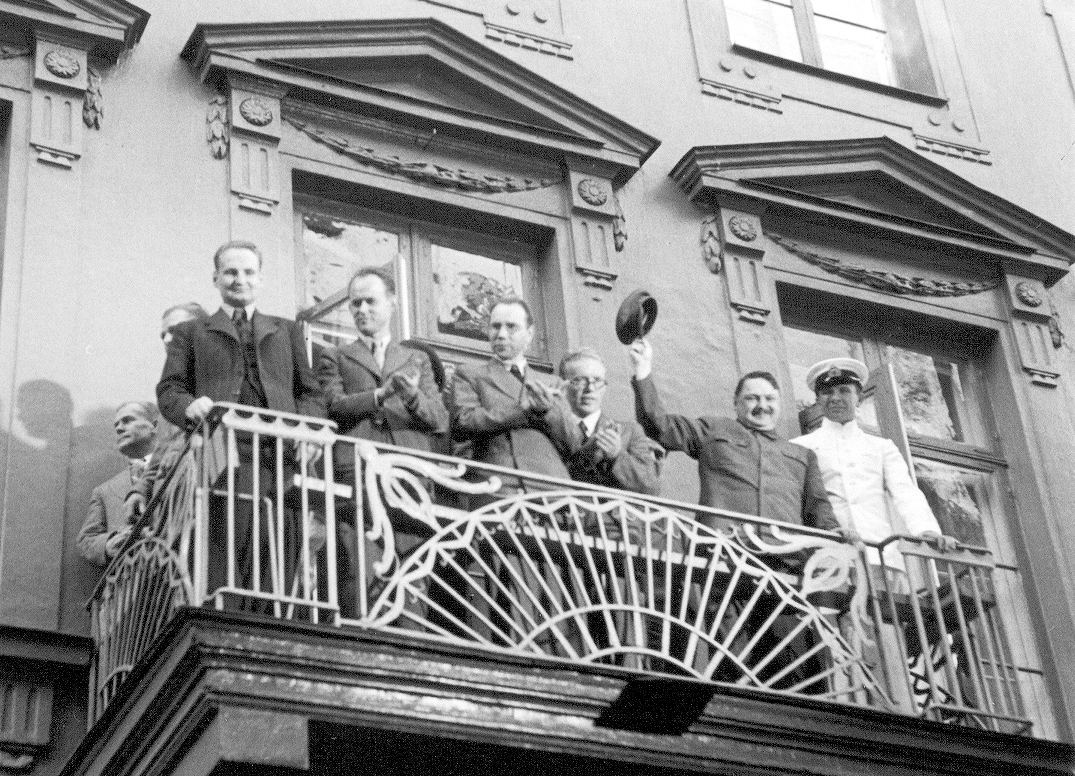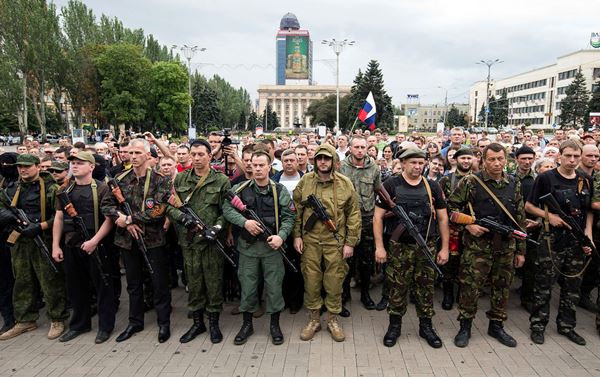Historian: By the time the West began to understand, the war in Ukraine was already…
Relations between Russia and Ukraine have undergone major changes throughout history, writes historian Meelis Maripuu.
Political relations between Ukraine and Russia have undergone three significant changes over the last one hundred years. In 1917, the Russian Empire collapsed amid national conflicts and the First World War (1914-1918), which led to the independence of many nations formerly subjugated by the Tsar. Several new countries emerged at the end of this turmoil: Finland, Poland, Estonia, Latvia, and Lithuania. In addition, some smaller territories were merged with Romania and Turkey. The Ukrainians also declared their independence, an act formally recognized by the Bolshevik Republic on 17 December 1917.

Nonetheless, the Ukrainian War of Independence (1917-1921) broke out only a week later. The Bolsheviks initiated it. Although Lenin’s newborn workers’ state had agreed to recognize the Republic of Ukraine under the Treaty of Brest-Litovsk (the peace treaty it had signed with the Central Powers in March 1918), Ukrainian aspirations for national independence were to end in bitter dissapointment. As a result of the Polish-Soviet war (1919-1920), the territory of Ukraine was divided between Russia and Poland.
In the late 1930s, Soviet dictator Joseph Stalin seized the opporunity to recapture the territories that the Soviet regime had lost under the Treaty of Brest-Litovsk. On the one hand, Nazi Germany had begun to reshape Europe's borders as early as 1938. The German nation, humiliated by the harsh terms of the Treaty of Versailles (1919), was driven by Hitler's aspirations for German living space ("Lebensraum"), to be found in the east. On the other, Stalin stood ready to rebuild an empire.
On a global scale, three sides of the coming war had emerged: a German-led coalition; Western democracies that felt threatened by this coalition; and the opportunistic Soviet Union. Before the outbreak of war, the Soviet Union and Germany sought to establish a new order in Europe by signing a document that came to be known as the Hitler-Stalin Pact.
At the beginning of the war, the Soviet Union sought to avoid large-scale conflict. The German invasion of Poland began on 1 September 1939. On September 17, the Soviet Union followed suit under the false pretenses of protecting Belarusian and Ukrainian minorities in ’former’ Polish territories. As a result of this fourth partition of Poland, western Ukraine and western Belarus were annexed into the Soviet Union. The Soviets described themselves as “liberators” of Belarusians and Ukrainians who had been persecuted by Poland.
Mass terror operations were undertaken in the newly-occupied territories by the NKVD (the Soviet secret police) to secure Soviet power from alleged ’enemies’, suppress political opposition, and ensure rapid sovetisation. The activities and nature of those operational groups could be compared to Hitler's infamous SS units (Einsatzgruppen). Similar operations were used everywhere in Soviet-occupied territories until the re-occupation of the Baltics and the conquest of Eastern Europe in 1944–1945.
The primary tasks of these operational groups were to arrest officials of national and local government or so-called “reactionary elements” (including veterans of the Russian White Army); investigate detainees to identify potential opponents of the new regime; take control over mediums of communication (such as telegraph lines, radio stations, post offices, etc.); the immediate takeover of state and financial institutions; and the confiscation of of local archives (including secret service documents), which were used during investigations.
Three months after the invasion, the Soviet Union carried out deportations in the occupied territories of western Ukraine and western Belarus. Between 1940 and 1941, four waves of deportations occurred in these areas. The repressed were labeled as "counter-revolutionaries and nationalists." The heads of households were arrested and sent to Soviet prison camps. The rest of the family members were sent to special settlements in the Soviet eastern interior. Destroying the political, military, and intellectual elite of the occupied territories was crucial to breaking resistance.
At the same time, Western attention was focused on Nazi German aggression in Western Europe. As a result, the destruction and Sovietisation of Latvia, Lithuania, and Estonia, instituted across 1940-1941, went largely unnoticed, as did the accompanying mass repressions. Stalin's emissary Andrei Zhdanov supervised the first steps of Sovietisation in August 1940 and established a peculiar "historical connection" between Estonia and Ukraine. In the course of the establishment of the Estonian Soviet Socialist Republic (SSR), Zhdanov gave the head of the Estonian puppet government Johannes Vares the Constitution of the Ukrainian SSR. The word "Ukraine" was simply crossed out and replaced with "Estonia."

As a third party in the early years of World War II, the Soviet Union was de facto an ally of Germany until the strategic goals of the two dictators in Europe finally crossed. The confrontation between Lebensraum and world revolution left little room for ideological compromise and a joint ’victory’. However, both of them could have lost the war. Finally, the political decisions made at the end of the war led to a situation in which the Soviet Union (and later one of its successor states, the Russian Federation) emerged from the war as the "Savior of Europe“, taking no responsibility for the crimes it had committed on the path to ’victory’. Western democracies did not recognize the occupation and annexation of the Baltic states by the Soviet Union. However, this did not affect the international relations of the Soviet Union or the position of the country in any way. Realpolitik had indeed won.
Russian imperialism witnessed another catastrophe when the Soviet Union collapsed. Today’s President of Russia Vladimir Putin has called it the greatest geopolitical tragedy of the 20th century. The entire communist world system had collapsed, and the communist parties were removed from power. Many of the former constituent republics of the USSR gained independence. But many remained under Russia's influence. Nevertheless, Russia itself soon fell into an economic and political recession, and the country did not have the strength to maintain this influence.
As the situation stabilized, President Putin made efforts to again increase this influence. Those countries whose people had tried to resist the Soviet regimes and occupations by taking up arms during World War II have been accused of so-called ’Nazism’ in order to discredit them in the eyes of the international community and equate them with Nazi Germany. This rhetoric has affected both Germany and the rest of Europe because the subject is very sensitive.
So far, soft power measures have not significantly impacted Russia. On the contrary, Russia has threatened or even taken more aggressive steps against neighboring countries. With every new act of aggression, Russia had tested the limits of the international community: how far they can go until they face measures that force them to give up aggression?
Since the beginning of the Ukraine-Russia war in 2014, the international community's patience has been severely tested. After the annexation of Crimea, it has become clear that a policy based solely on sanctions cannot restrain Putin's dictatorship.

Until the escalation of war, it seemed that policies of non-recognition of the Crimean annexation might fade away, as such Western policies did during the Cold War era vis-à-vis the Baltic States. At that time, its meaning was mainly symbolic. Due to this lack of effective opposition, Putin has gained momentum. In a situation where most of the world is preoccupied with the health and energy crisis, and the Western world faces China’s growing demand for hegemony (such as military threats against Taiwan), Russia has launched a new offensive against Ukraine.
This inevitably makes one wonder: is there a parallel between Putin's visit to Xi Jinping, the Chinese President and Secretary-General of the Communist Party, and the meeting to sign the Hitler-Stalin Pact in Moscow in 1939? Did Russia take the first step this time, and is China waiting for the right moment? At present, Russian and Chinese goals, which could change the world order, seem to be mutually supportive.
Even before the actual start of the war, the United States had informed the United Nations that it had credible information showing that Moscow was compiling a list of Ukrainians to be killed or sent to camps after the military occupation. Based on historical experience, there is no reason to doubt the seriousness of this information or the real danger it poses to many individuals. The fate of many Estonian or Ukrainian people who fell victim to the Soviet occupation in the 1940s is still unknown. We hope that in the future, we will not have to investigate the fate of Ukrainian politicians and public figures arrested in 2022.
Therefore, part of me would like to end the article's title as follows: By the time the West began to understand, the war in Ukraine was already over. But, such a title would be depressing! So, why did it have to go so far? I hope the West understands the situation, but do they have enough will to intervene?
Meelis Maripuu has a PhD in history and is a member of the board of the Estonian Institute of Historical Memory.